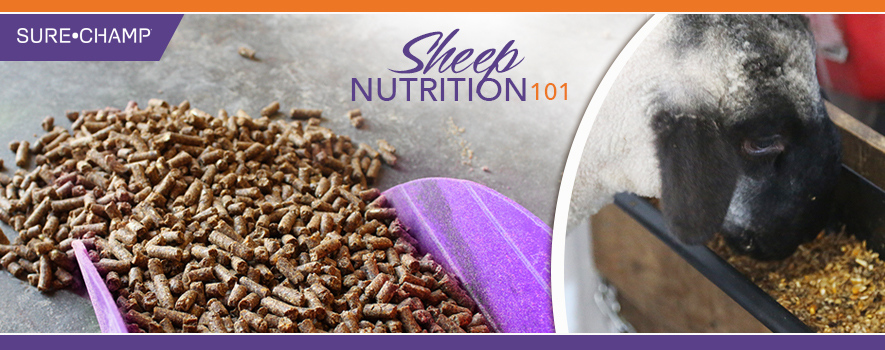
Q&A with Nick Warntjes, Associated Feed and Supply
- What makes up a ‘balanced’ feed ration?
A balanced feed ration supplies the proper amounts and proportions of nutrients needed for a specific purpose or stage of an animal’s life. While a show lamb diet might have different specs than a lactating ewe ration, all diets should be balanced to achieve the desired goal. We generally use a balanced “base” feed ration and adjust using supplements and additional forages depending on what our goal is or what we need to try to correct with the lamb.
- On average, how much should a sheep consume in a day?
Show lambs should consume on average around 3-3.5% of their body weight. This should include grain as well as hay. Depending on what the current goal of your animal is, this should be adjusted if you are trying to push or hold an animal based on weight or body condition. I generally try to get a lamb up to around 3-3.5 pounds of grain per day and stay there for most of the feeding time. It is important to make adjustments slowly and gradually. We will generally bump a lamb’s feed 0.25 lb. per day and make sure they are cleaning up their feed completely for approximately 10 days before making another increase.
- Why is forage important when feeding sheep?
Forage is extremely important when feeding sheep simply because they are ruminant animals. Ruminant animals are designed by nature to graze or browse forages. Since we don’t recommend allowing show lambs to graze on pasture, it is extremely important to provide an additional source of fiber in their diets. Long stemmed forages (alfalfa or grass hay) are a vital part of keeping the rumen microbes alive and healthy. From a show lamb perspective, we use hay to adjust middles and flank lines as we get closer to show day. Don’t forget that hay also contributes nutritionally to a ration. For example, if we have a large framed lamb that we are trying to slow the growth on, we will use a lower protein forage type hay rather than high quality alfalfa.
- How do you identify which feed is best for your project?
There are many different brands of feed out there and most of them will be similar in terms of ingredients and specs. I think it is important to find a feed that you can get fresh and readily available. Most importantly, learn how to feed it. Figuring out how an animal will respond to the feed based on its body type and learning how and when to adjust is probably as important as any ingredient. When making adjustments or adding supplements, give them adequate time to work. Changes won’t be made overnight. I also believe that it’s important to understand that not all lambs will be fed the same diet. Larger framed, leaner designed lambs will generally need a lower protein, higher fat diet. Smaller framed, quicker lambs will need a higher protein, lower fat diet.
- Why is it important to watch/monitor your sheep while they eat?
Feeding time is not simply just about putting the feed in the feeder! Take the time to watch and observe your animal as it eats. A lamb not eating or drinking normally can be the first sign of sickness. However, if you don’t know how your lamb acts normally it will be hard to see these changes. Keeping an eye out for choking or bloat is also an important reason to monitor your lamb as it eats.
- What are the most important ingredients to identify on a feed tag? Why?
Knowing how to read and interpret a feed tag can be a very valuable part of your success with a lamb project. While some things on a tag such as micro and macro minerals are important, they aren’t something I necessarily worry about as long as I’m using a high-quality show feed and a supplement like Sure Champ® Spark or Sure Champ® Extreme. I do however, pay attention to protein, fat and fiber levels. These are the basic categories that can be changed or adjusted throughout the duration of your project. Depending on the age, frame size or body type of your lamb, adjustments will most likely need to be made in the protein and fat levels of your lamb’s diet.
- What about fresh water?
Water is the most critical nutrient. Water is also directly related to feed intake. Make sure that your lambs always have access to clean, fresh water that is neither too hot nor too cold.
- How to can I keep water intake and appetite consistent?
In addition to ensuring your lamb has fresh feed and water, supplements such as Sure Champ Spark and Vita Charge® can be used to increase intake. Spark is best used as a daily top-dress supplement. Spark contains Amaferm®, a prebiotic that stimulates the digestive system, promotes consistency in appetite and will allow your animal to fully utilize your base ration and other feed additives. A product like Vita Charge Liquid Boost® or Vita Charge® Gel is ideal for stressful situations like receiving, hauling and showing, which can all throw an animal off track. I recommend administering Vita Charge three days prior to an increase in stress (like traveling to a show) and until the environment returns to normal or stress is reduced.

